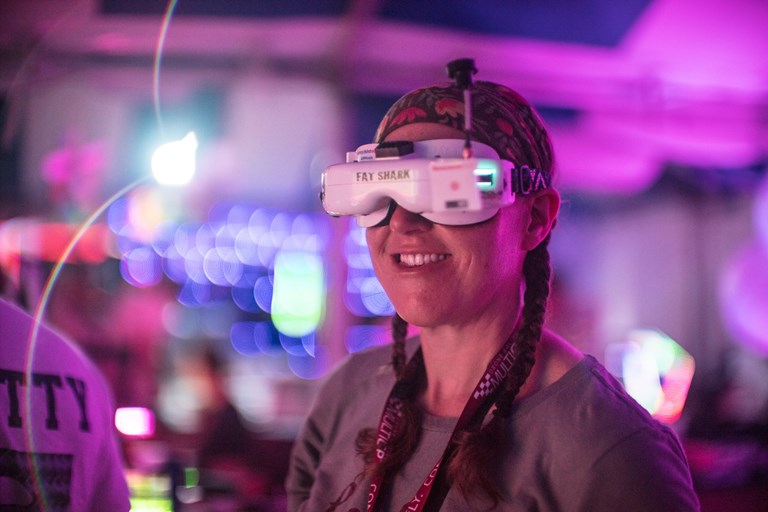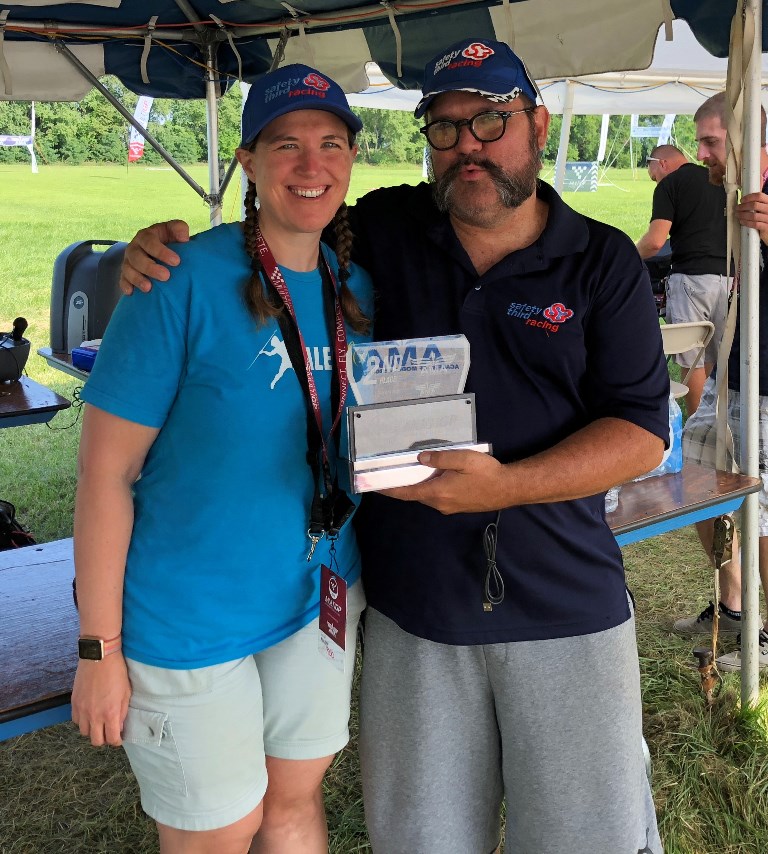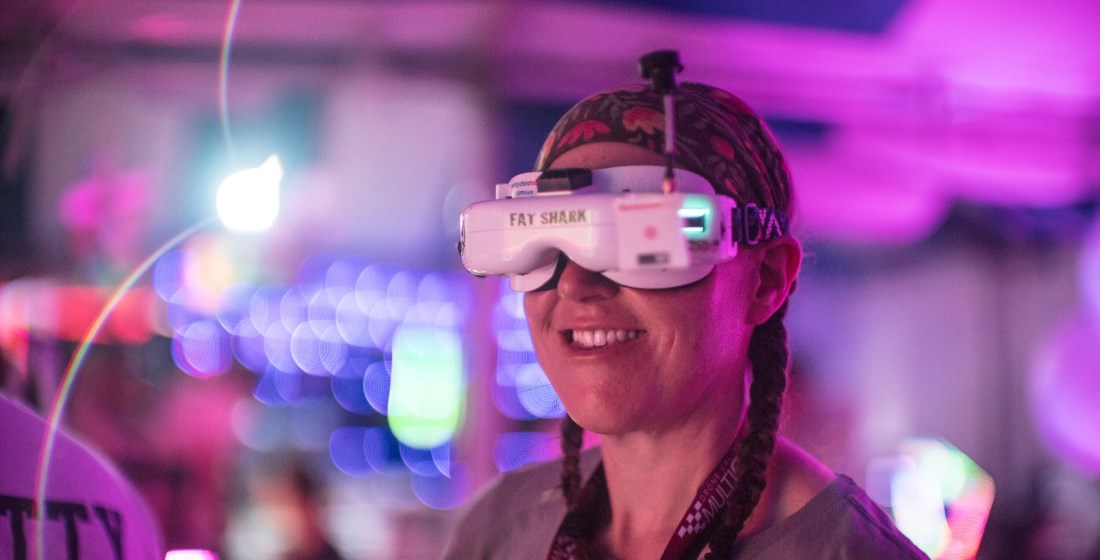You’ve heard about PPL Electric Utilities using drones to patrol power lines. Here’s the story of an employee who uses drones to win prizes.
Customer Experience Specialist Susie Smith recently competed in the MultiGP International Open, a drone racing event in Muncie, Ind., that drew about 200 competitors.
If you haven’t seen drone racing on ESPN, it’s pretty much what it sounds like. Pilots guide the unmanned aerial vehicles through designated courses, flying them through gates and around poles at speeds of 70 mph or more. Each drone has a camera on it, and the pilots wear goggles so they can fly using the view from the camera. (Photo at right courtesy Clint Hild.)
flying them through gates and around poles at speeds of 70 mph or more. Each drone has a camera on it, and the pilots wear goggles so they can fly using the view from the camera. (Photo at right courtesy Clint Hild.)
Smith took up drone racing about a year ago – and she’s gotten pretty good at it. She was the second-place finisher among all men and women racing the rookie track at the Muncie event, earning a trophy.
On the FAI U.S. Qualifier track, a different course, she placed third among female finishers. And on the International Open course, she was one of only two women to complete the course in the time limit. (She modestly notes: “Very few female pilots race drones.”)
Smith’s boyfriend, Tom, introduced her to drone racing, and they go to races about once a month. She likes the challenges of the sport, like memorizing courses on short notice. She also enjoys the camaraderie among participants.
“You spend the day outside in the sunshine with really cool people,” she said. “You’re making friendships, and everyone is cheering you on to get better. Even if you’re doing a race, if you have a mechanical problem, people will help you out.”
Smith notes that racers obey all regulations on drone use. For instance, racers must keep the drones within view at all times, just like the PPL employees who use drones to survey power lines. Drone racing events also include netting, barricades, fire extinguishers and other precautions to keep both competitors and racers safe.
 Smith also says she’s applied human performance safety tools, which are used by our employees on the job, to her drone racing. For instance, drone chargers have five slots for different voltages of batteries – and the chargers can catch fire if you put a battery in the wrong slot. To avoid this error trap, she’s covered the charger slots she doesn’t use.
Smith also says she’s applied human performance safety tools, which are used by our employees on the job, to her drone racing. For instance, drone chargers have five slots for different voltages of batteries – and the chargers can catch fire if you put a battery in the wrong slot. To avoid this error trap, she’s covered the charger slots she doesn’t use.
“That’s definitely something I learned at PPL,” she said.
Drone racing isn’t cheap – a drone can run several hundred dollars. But there are lower-cost ways to get introduced to the sport, like using online simulators that are good training tools, Smith said.
As for her future goals, Smith has a challenging target in sight: The fastest woman racer at next year’s Muncie meet will earn a trip to China as part of a U.S. national drone-racing team.
“I have a year to get faster,” she said. “I knew I wasn’t going to make it this year, but who knows what could happen next year?
“It’s really a lot of fun.”
The video below, provided by Susie Smith, is a little rough but gives you an idea of what a drone racer sees during a race.



0 Comments